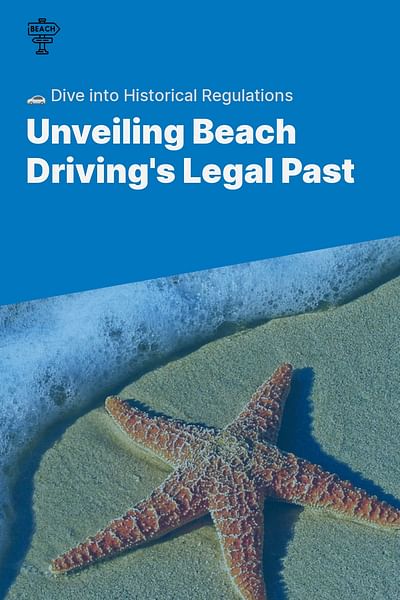David is a beach conservationist who is passionate about preserving the natural beauty of the coast. He advocates for responsible beach driving practices.
Hey there! It's David from Coast Buddy, your go-to source for all things beach driving. Today, I'm going to take you on a journey through the historical legal regulations for beach driving. So, buckle up and let's dive in!
Beach driving has a rich history that dates back several decades. Over the years, the rules and regulations surrounding this activity have evolved to ensure the safety of both drivers and the environment.
In the early days, beach driving was a common practice with minimal restrictions. People would simply drive their vehicles along the coastline, enjoying the freedom and thrill of the open beach. However, as the popularity of beach driving grew, concerns arose regarding the impact it had on the fragile coastal ecosystems.
To address these concerns, local authorities began implementing regulations to protect the environment while still allowing beach driving to continue. These regulations varied from one coastal region to another, but they generally focused on limiting the areas where vehicles were allowed to drive and imposing speed limits to prevent damage to the beach and its wildlife.
In the 1970s, the environmental movement gained momentum, leading to increased awareness about the need for stricter regulations. This resulted in the establishment of protected areas, such as wildlife refuges and nesting grounds for endangered species. As a result, beach driving restrictions became more prevalent in these sensitive areas.
Fast forward to the present day, and beach driving regulations have become even more comprehensive and standardized. Most coastal states have specific laws in place to govern beach driving, ensuring the safety of both drivers and the environment. These laws typically outline designated driving areas, speed limits, and specific times when beach driving is allowed.
It's important to note that beach driving regulations can vary significantly from one state to another. Some states have more lenient rules, allowing for greater access to the beach, while others have stricter regulations to protect sensitive habitats. It's crucial to familiarize yourself with the specific regulations of the beach you plan to visit to ensure compliance and a safe driving experience.
As a beach conservationist, I strongly advocate for responsible beach driving practices. It's essential to respect the natural environment and follow all posted signs and regulations. By doing so, we can all play a part in preserving the beauty of our coastlines for future generations to enjoy.
So, there you have it! A brief overview of the historical legal regulations for beach driving. Remember, always drive responsibly and be mindful of the environment. If you have any more questions or need further information, feel free to reach out. Happy beach driving!















